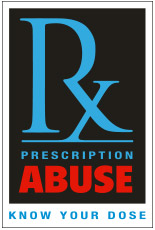New AMA report details grim realities of worsening overdose epidemic
CHICAGO — The 2023 Overdose Epidemic Report (PDF), released today by the American Medical Association (AMA), finds opioid prescribing by physicians and other health professionals decreased for the 13th consecutive year, down nearly 50% since 2012, while overdoses and deaths related to illicitly manufactured fentanyl, xylazine and other synthetic substances continue to increase. In 2022, more than 107,000 people died from a drug-related overdose in the United States. Data shows the epidemic is increasingly impacting young people, Black and Brown people, and pregnant people.
There have been signs of progress in the past year—notably community-based distribution of naloxone by leading harm reduction supporters and approval by the U.S. Food and Drug Administration of over-the-counter (OTC) naloxone, which the AMA has long championed. Naloxone dispensing has increased more than 200% since 2018. The AMA continues to support widespread distribution of naloxone and urges physicians to educate patients on naloxone and prescribe to patients at risk of overdose.
“Naloxone is one success story we’ve seen this year because access to opioid-overdose reversal medications continues to save tens of thousands of lives,” said Bobby Mukkamala, M.D., chair of the AMA Substance Use and Pain Care Task Force. “Unfortunately, we are at a place where naloxone needs to be available as easily as a first aid kit or a defibrillator in public spaces. While we continue to study and address the underlying factors that contribute to substance use disorders, policymakers must look at additional, evidence-based harm reduction strategies to combat the skyrocketing number of overdoses.”
“The AMA remains focused on advocating for meaningful policy implementation and enforcement to support affordable, accessible, evidence-based care for patients with a substance use disorder as well as for patients with pain,” said Dr. Mukkamala. “Health insurers must stop dragging their feet when it comes to eliminating barriers to accessing these treatments and do their part to end the epidemic. Without action on the policy recommendations in this report, the epidemic will continue to harm and kill Americans.”
The report calls for immediate action on strategies including:
- An increase in harm reduction resources such as naloxone, syringe services programs and fentanyl test strips. Naloxone should be stocked in schools, universities, and other public venues. The AMA urges all manufacturers of overdose reversal agents to submit OTC applications and price their products responsibly. Payers must also cover naloxone at low- or no-cost.
- Policymakers should support legislative and regulatory actions to remove administrative and other barriers such as prior authorization, step therapy and dosage caps for medications to treat opioid use disorder (MOUD), including dosage caps on buprenorphine. The special rules that had prevented most physicians from prescribing buprenorphine were finally eliminated this year, but removal of the remaining barriers to care that needlessly prolong this devastating epidemic is long overdue.
- State insurance departments must enforce mental health and substance use disorder (SUD) parity laws. The Mental Health Parity and Addiction Equity Act (MHPAEA) was enacted in 2008 to protect individuals with a mental illness or SUDs. Because health insurers systematically fail to comply with the law on their own, state and federal regulators must (1) increase meaningful enforcement of the law; (2) significantly increase financial and other penalties against health insurers who violate the law; and (3) require comprehensive corrective actions from health insurers to meaningfully protect patients.
- State officials should remove punitive policies against pregnant individuals and parents who have a SUD. State departments of corrections and private jails and prisons need to ensure that all individuals with an opioid use disorder or mental illness receive evidence-based care while incarcerated—and are linked to care upon release. This includes ensuring access to MOUD.
Additional recommendations and data are in the full report (PDF).
State-by-state trend data for opioid prescriptions, MOUD, naloxone and state prescription drug monitoring programs can be found on the AMA overdose epidemic website.
